RSPB Fairburn Ings
If you’re a big fan of nature and like to get out into the great outdoors, you’ll love RSPB Fairburn Ings. Nestled between Wakefield, York and Leeds on the outskirts of Ca...
Did you know Wakefield was home to the world’s first ever nature reserve, now Anglers Country Park?
Wakefield-born Charles Waterton was a naturalist, explorer and pioneering ecologist and in the 1820s, he made the grounds of his home, Walton Hall, into a place of safety for nature. Charles travelled all over the world, bringing back specimens and preserving them.
In years gone by the streets of Wakefield would have been full of real animals. Horses pulling the carts and carriages and cows and sheep being herded into the cattle market – the largest in the North of England. In the 1830’s, a Zoological Garden stood in the grounds of the Orangery in Back Lane. Things didn’t end well though. Joseph Gledhill, a young biscuit salesmen, decided to offer a biscuit to a bear who lived there. The bear liked the biscuits so much that she leapt out of her pit in search of more. A grisly scene ensued as several people tried to capture the rampaging bear. Sadly, one lady lost her life and the zoological gardens closed down.
Hopefully you won’t encounter a biscuit-hunting bear today, but appropriately, as the location of the world’s first nature reserve, a walk around the city can reveal many hidden creatures. They’re tucked away in signs, friezes, sculptures, decorations and mosaics. They’re up high and down low, peeping from corners and ledges. Take a stroll through the historic streets to discover the birds, bees and beasties of Wakefield.
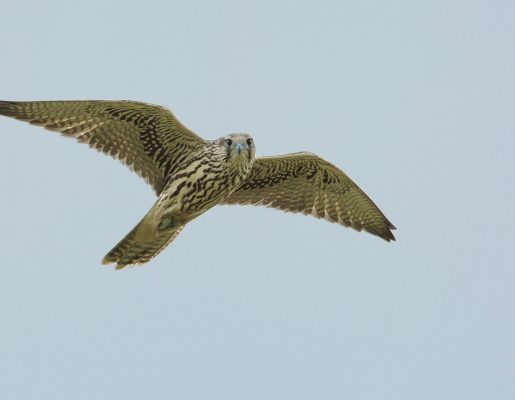
Peregrine
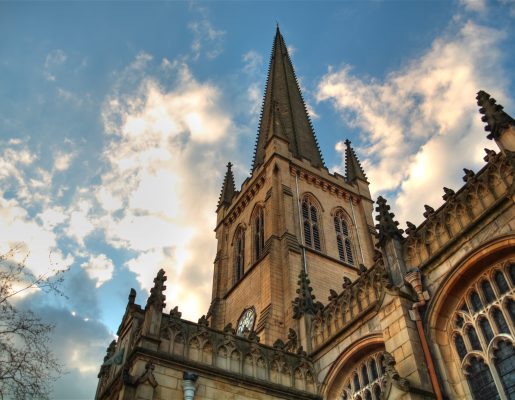
Wakefield Cathedral
In the city centre, at the top of Wakefield Cathedral spire, the tallest one in Yorkshire, you can see the elegant silhouette of a cockerel on the weathervane. There are splendid cockerels on lots of churches. In the 9th century, Pope Nicholas decreed that all churches should display the cockerel to remind citizens of Peter’s betrayal of Jesus.
A cockerel is not the only bird to be found on the Cathedral. You might spot a real peregrine falcon – but only if you’re quick! Peregrines can move at over 200 miles per hour. A pair of the world’s speediest birds live high upon the tower. The male’s tags tell us he was hatched on St Georges’ Church Spire in Sheffield. He and his mate moved to their home in Wakefield in 2015. Since then, they have raised a magnificent 21 chicks. You might not spot the peregrines, but you may hear their distinctive chilling calls – a wailing screech!
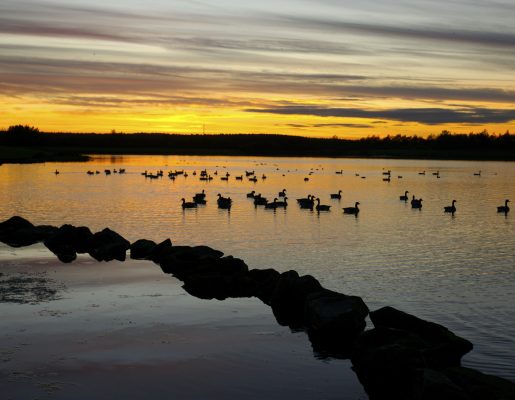
Anglers Country Park
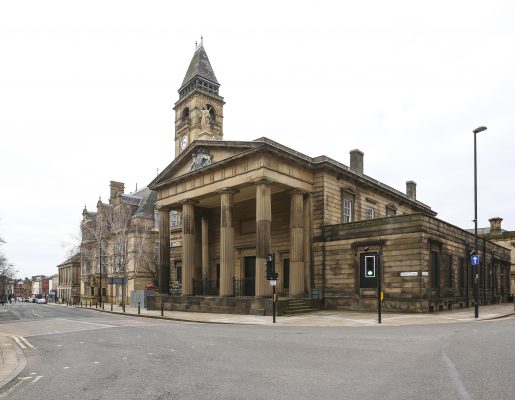
Wakefield Court House
At the junction of the Bullring and Cross Square you can see the domed Grand Clothing Hall. Built in 1906, the decorative building hides a mythical beast. In Cross Square, a cross pattern in the pavement shows where the Market Cross used to be. Stand on the crosses and look up to the top triangular gable to spot a fantastical dragon peeping down. He’s not the only dragon in the city – keep your eyes peeled!
Along Wood Street is the Town Hall. Just opposite is the door to the Old Police Station. Above the door are four cheeky lions – all with their tongues sticking out. How rude! You can find more of these impertinent felines further along the building.
Next to the Town Hall is Wakefield Court House, finished in 1810. On the triangular pediment above the door, another fine lion and his chum the unicorn support the Royal Coat of Arms. The mighty lion is the symbol of England and the mystical unicorn is the symbol of Scotland.
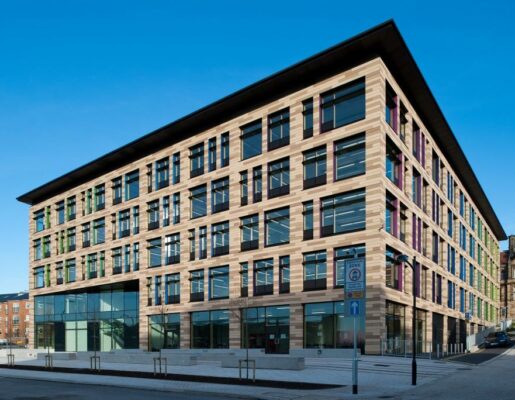
Wakefield One
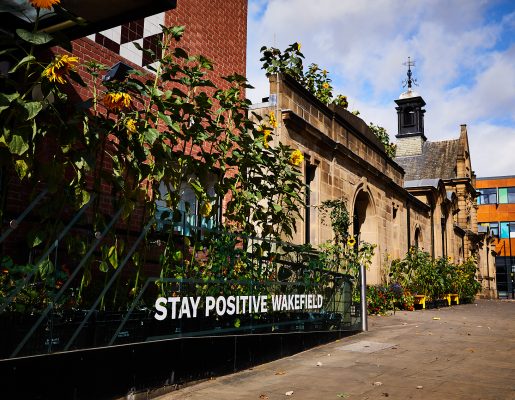
The Art House
Wakefield Museum is housed at Wakefield One. Just by the entrances, discover the Wakefield Coat of Arms. The two animals supporting the arms remind us of Wakefield’s rich heritage. The dray horse wears a smart pack saddle – handy for bringing the huge packs of wool and cloth to the markets and the golden eagle represents the district’s ancient Roman past.
Down the hill, on Drury Lane, is the Old Wakefield Library. Built in 1905, it is one of 2,500 libraries built with funds granted by a Scottish-American philanthropist, Andrew Carnegie. Today the building houses The Art House which includes 34 artist’s studios. I wonder which artist created the little dragon on the Caretaker’s House at the back. Tucked in the eaves, this has to be one of the cutest fire breathing monsters ever.

Unity Works, © Tim Green
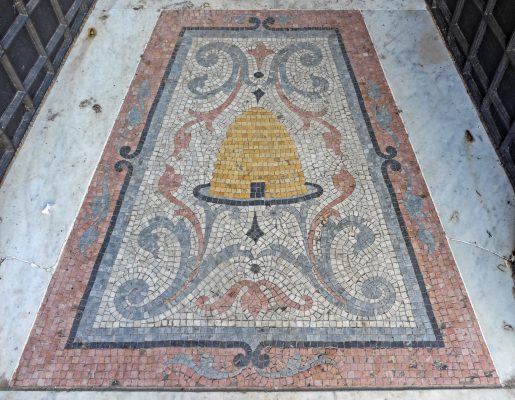
Beehive mosaic at Unity Works, © Tim Green
A less exotic beast awaits at 97 Westgate. Over the doors, you’ll find a spectacularly horned sheep. The wool on its back was an important commodity and the wealth of medieval Wakefield owed at lot to the sheep. Huge packs of wool would have been brought to the raw wool markets.
Also on Westgate, you’ll find the Unity Works which were opened in 1867 as the headquarters of the Wakefield Industrial Co-operative Society. Lovely signs show where boots, shoes, glass and hardware could be bought. Study the frieze underneath the big window to find a hive full of buzzy bees. Bees and beehives symbolise work, industry and co-operation – just like the Wakefield Industrial Co-operative Society. For an added bonus, keep your eyes on the ground and find a stunning hive mosaic in one of the doorways.
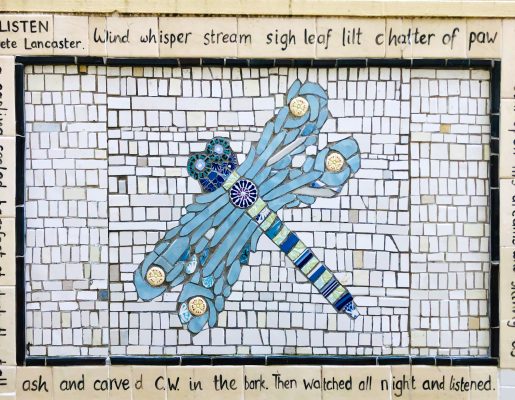
Almshouse Lane
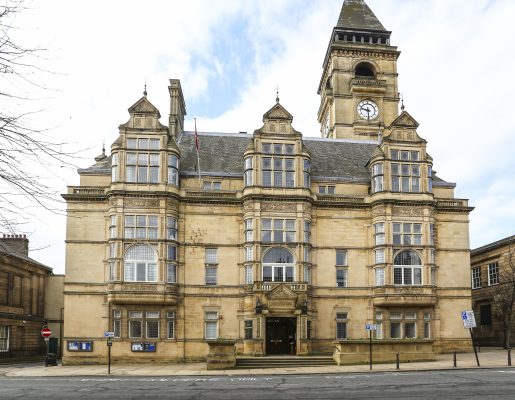
Wakefield Town Hall
There are more birds, bees and beasties to be found all over the city. The Old Grammar School on Brooke Street has a wise old owl peeking out above the door – the heraldic emblem of the founders, the Saville family. Ravens, talbots (hunting dogs), more falcons and even pumas and griffins can be found on the pub signs in the city. The Town Hall has a wealth of elegant birds in its decorations, with swan-like creatures high on the chimney stack. In Almshouse Lane, seek out a beautiful mosaic of a dragonfly. You can find ladybirds, butterflies and squirrels tucked away on the other mosaics.
Put on your safari hat and perhaps take your binoculars because Wakefield is not only home to the world’s first nature reserve, it is still a veritable nature reserve today. Enjoy hunting out the wildlife around you, but perhaps don’t offer them biscuits… you never know what might happen.